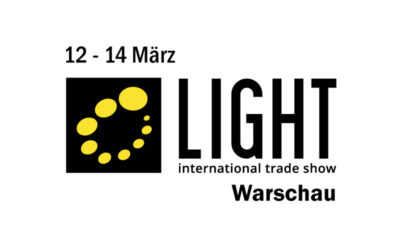V0 flammhemmendes Polycarbonat ist ein hochwertiges Material, das speziell formuliert wurde, um hervorragende feuerhemmende Eigenschaften zu gewährleisten. Dies macht es ideal für Anwendungen, bei denen der Brandschutz im Vordergrund steht, wie im Elektro-, Automobil-, Transport-, Krankenhaus- und Bausektor. Flammhemmendes Polycarbonat V0 ist die ideale Wahl für diejenigen, die ein Material suchen, das eine Kombination aus Brandschutz, Transparenz und mechanischer Festigkeit für Rohre und Profile bietet. Seine Eigenschaften machen es geeignet für kritische Anwendungen in verschiedenen Branchen und gewährleisten langfristige Qualität und Zuverlässigkeit.
| Physical | Nominal Value Unit | Test Method |
|---|---|---|
| Density | 1.25 g/cm3 | ISO 1183 |
| Melt Volume-Flow Rate (MVR) | - | ISO 1133 |
| 300°C/1.2 kg | 3.00 cm3/10 min | - |
| 300°C/2.16 kg | 5.50 cm3/10 min | - |
| Molding Shrinkage - Flow2 | 0.40 to 0.60% | Internal Method |
| Water Absorption | - | ISO 62 |
| Saturation, 23°C | 0.32% | - |
| Equilibrium, 23°C, 50% RH | 0.13% | - |
| Mechanical | Nominal Value Unit | Test Method |
|---|---|---|
| Tensile Modulus | 2350 MPa | ISO 527-2/1 |
| Tensile Stress | - | ISO 527-2/50 |
| Yield | 65.0 MPa | - |
| Break | 70.0 MPa | - |
| Tensile Strain | - | ISO 527-2/50 |
| Yield | 7.0% | - |
| Flexural Modulus3 | 2350 MPa | ISO 178 |
| Flexural Strength3,4 | 95.0 MPa | ISO 178 |
| Taber Abrasion Resistance | - | Internal Method |
| 1000 Cycles, 1000 g. CS-17 Wheel | 9.00 mg | - |
| Impact | Nominal Value Unit | Test Method |
|---|---|---|
| Charpy Notched Impact Strength 4,5 | - | ISO 179/1eA |
| –30°C | 10 kJ/m2 | - |
| 23°C | 11 kJ/m2 | - |
| Charpy Unnotched Impact Strength5 | - | ISO 179/1eU |
| –30°C | No Break | - |
| 23°C | No Break | - |
| Notched Izod Impact Strength6 | - | ISO 180/1A |
| –30°C | 10 kJ/m2 | - |
| 23°C | 11 kJ/m2 | - |
| Unnotched Izod Impact Strength6 | - | ISO 180/1U |
| –30°C | No Break | - |
| 23°C | No Break | - |
| Hardness | Nominal Value Unit | Test Method |
|---|---|---|
| Ball Indentation Hardness (H 358/30) | 95.0 MPa | ISO 2039-1 |
| Thermal | Nominal Value Unit | Test Method |
|---|---|---|
| Heat Deflection Temperature7 | - | - |
| 0.45 MPa, Unannealed, 100 mm Span | 148°C | ISO 75-2/Be |
| 1.8 MPa, Unannealed, 100 mm Span | 135°C | ISO 75-2/Ae |
| Vicat Softening Temperature | - | - |
| – | 155°C | ISO 306/B50 |
| – | 156°C | ISO 306/B120 |
| Ball Pressure Test (125°C) | Pass | IEC 60695-10-2 |
| CLTE-Flow (23 to 80°C) | 0.000070 cm/cm/°C | ISO 11359-2 |
| Thermal Conductivity | 0.20 W/m/K | ISO 8302 |
| Electrical | Nominal Value Unit | Test Method |
|---|---|---|
| Surface Resistivity | 1.0E+15 ohms | IEC 60093 |
| Volume Resistivity | 1.0E+15 ohm cm | IEC 60093 |
| Relative Permittivity | - | IEC 60250 |
| 50 Hz | 2.70 | - |
| 60 Hz | 2.70 | - |
| 1 MHz | 2.70 | - |
| Dissipation Factor | - | IEC 60250 |
| 50 Hz | 0.0010 | - |
| 60 Hz | 0.0010 | - |
| 1 MHz | 0.010 | - |
| Electric Strength (3,20 mm, in Oil) | 17 kV/mm | IEC 60243-1 |
| Flammability | Nominal Value Unit | Test Method |
|---|---|---|
| Flame Rating - UL (1.50 mm) | V-0 | UL 94 |
| Glow Wire Flammability Index (1.00 mm) | *850 °C *960 °C | IEC 60695-2-12 |
| Optical | Nominal Value Unit | Test Method |
|---|---|---|
| Refractive Index | 1.586 | ISO 489 |
| Transmittance (2540 μm) | 88.0% | ASTM D1003 |
| Haze (2540 μm) | < 0.80% | ASTM D1003 |
| Drying Temperature | 120°C | - |
| Drying Time | 2.0 to 4.0 hr | - |
| Hopper Temperature | 100 to 120°C | - |
| Cylinder Zone 1 Temp. | 260 to 300°C | - |
| Cylinder Zone 2 Temp. | 260 to 290°C | - |
| Cylinder Zone 3 Temp. | 260 to 290°C | - |
| Adapter Temperature | 240 to 280°C | - |
| Melt Temperature | 260 to 300°C | - |
| Die Temperature | 240 to 300°C | - |
| Calibration Temp, First | 50.0 to 100°C | - |
Notes
1 Typical properties: these are not to be construed as specifications
2 Tensile Bar
3 2.0 mm/min
4 Yield
5 80*10*3 sp=62 mm
6 80*10*3
7 120*10*4 mm


